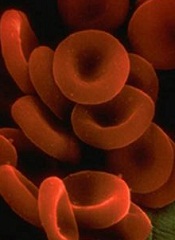
A new study contradicts previous beliefs about how the body disposes of red blood cells (RBCs) and recycles their iron.
The work suggests the accumulation and removal of aged or damaged RBCs largely takes place in the liver rather than the spleen, and the same is true for iron
recycling.
Researchers believe this discovery, published in Nature Medicine, could lead to improved treatment or prevention of anemia or iron toxicity.
“Textbooks tell us that red blood cells are eliminated in the spleen by specialized macrophages that live in that organ, but our study shows that the liver—not the spleen—is the major on-demand site of red blood cell elimination and iron recycling,” said study author Filip Swirski, PhD, of Massachusetts General Hospital in Boston.
“In addition to identifying the liver as the primary site of these processes, we also identified a transient population of bone-marrow-derived immune cells as the recycling cells.”
Dr Swirski and his colleagues used several different models of RBC damage to investigate the mechanisms involved in RBC clearance and the recycling of their iron.
Experiments in mice revealed that the presence of damaged RBCs in the bloodstream led to a rapid increase in a specific population of monocytes. These cells took up the damaged RBCs and traveled to both the liver and the spleen.
Several hours later, almost all of those RBCs were located within a population of specialized macrophages that were observed only in the liver. Those macrophages eventually disappeared once they were no longer needed.
The researchers also showed that expression of chemokines draws RBC-ingesting monocytes to the liver, resulting in the accumulation of the iron-recycling macrophages.
Blocking that process led to several indicators of impaired RBC clearance, including toxic levels of free iron and hemoglobin and signs of liver and kidney damage.
“The fact that the liver is the main organ of RBC removal and iron recycling is surprising, as is the fact that the liver relies on a buffer system consisting of bone marrow-derived monocytes that consume damaged red blood cells in the blood and settle in the liver, where they become the transient macrophages capable of iron recycling,” Dr Swirski said.
“The mechanism we identified could be either helpful or damaging, depending on the conditions. If overactive, it could remove too many RBCs, but if it’s sluggish or otherwise impaired, it could lead to iron toxicity. Further study could provide us with details of how this mechanism occurs in the first place and help us understand how to harness or suppress it in various conditions.”


